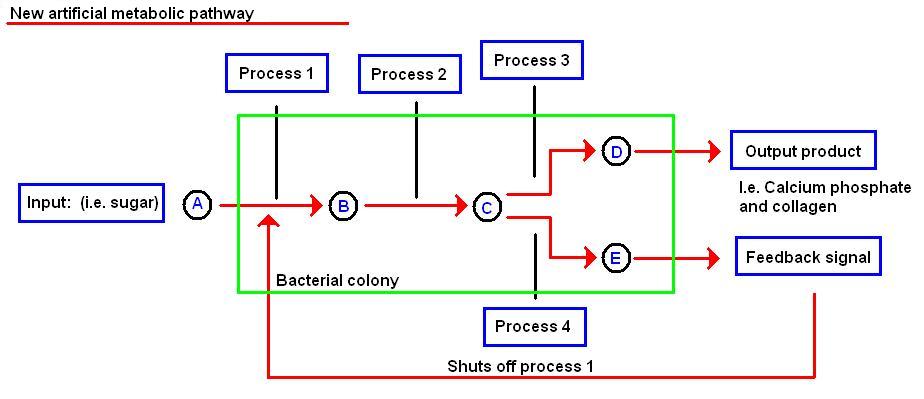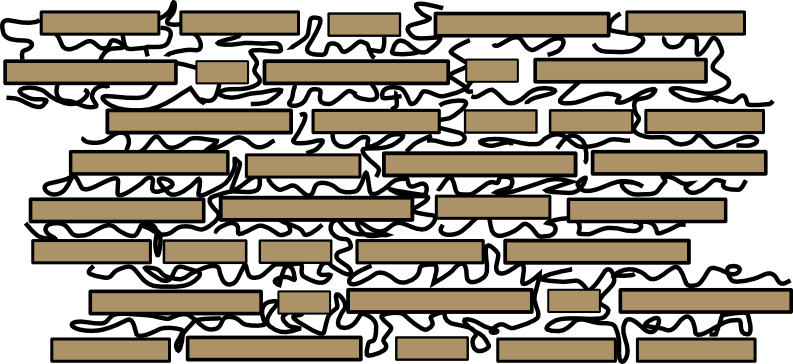Ideas
From 2006.igem.org
m (→Ideas and discussions from the second brainstorming session) |
|||
| (One intermediate revision not shown) | |||
| Line 57: | Line 57: | ||
Idea 9: | Idea 9: | ||
| - | Bacterial calculator - | + | Bacterial calculator - Bacteria that can respond to a signal so that they end up adding up binary numbers. |
Idea 10: | Idea 10: | ||
| Line 76: | Line 76: | ||
However, provided we succeed, it really would be lovely handing the iGEM judges some bacterially produced mother-of-pearl with the Edinburgh logo on it :) | However, provided we succeed, it really would be lovely handing the iGEM judges some bacterially produced mother-of-pearl with the Edinburgh logo on it :) | ||
| - | [http://2006.igem.org/University_of_Edinburgh_2006 Main Page | + | [http://2006.igem.org/University_of_Edinburgh_2006 Main Page] |
Latest revision as of 14:33, 20 July 2006
[http://2006.igem.org/Ideas#Ideas_from_the_first_significant_brainstorming_session Brainstorming 1 ]
[http://2006.igem.org/Ideas#Ideas_and_discussions_from_the_second_brainstorming_session Brainstorming 2 ]
[http://2006.igem.org/Arsenic_Biosensor Arsenic Biosensor]
[http://2006.igem.org/Idea_611 3D Structure Builder]
Ideas from the first significant brainstorming session
Idea 1:
An arsenic sensing device that produces a change in pH in the medium that the bacteria are in. This could be combined with a device that would allow an analogue signal to be produced based on the concentration of arsenic.
Idea 2:
Modelling of a biological clock:
This project would be about modelling the biological mechanisims that control the circadian clock in plants. Could we make something that could produce a signal every hour? Could we change one parameter and get a signal every 4 hours, or 2 days for example? There would be little or no actual assembly involved.
Idea 3:
A multiple input/output device. ex: 3 input chemicals, and a combination of the 3 inputs could produce up to 6 output states/products.
Idea 4:
Bacterial Canvas. Using a biofilm with a device from idea 3 to produce multiple colours depending on the inputs.
Idea 5:
Bacterial photosynthesis. Put coding into e-coli or yeast to make them photosynthesize.
Idea 6:
Bacterial assembly line/Artificial metabolic pathway. A bacteria could be configured to produce different products in stages to produce a product that can't be made by one process alone. A control system could be integrated to manage the system.
This idea can be combined with another we had involving making bacteria form a 'hard' material, for example calcium phosphate (bone!). If we could make a way of artificially switching on and regulating the synthesis of the material we could make physical bricks, or structures, and perhaps also control the degradation of the material. Literally building using bacteria.
Idea 7:
Bacterial 'Hotness' Sensor. Get bacteria to detect Capsaican (the chemical that makes chilli peppers hot) and convert it into something which is less hot. Could have coloured output depending on the 'hotness' and adjust the heat dependent on the requirement. (Or maybe we can convert mild food into spicy food :)
Idea 8:
Enviromental Variables (like Lightness,etc)=>[Bacterial group]=>Biological Output=>Convert to Electronical Signal=>[Electronical Chip]=>Electronical output(like sound,etc)=>[Electronical Detector]=>Electronical response=>Convert to Biochemical stimuli=>[Bacterial group]=>direct the moving of bacterial (just like dancing).Basically we have two parts, one from bio to engineering, and then from engineering to bio. It looks like bacterial controls bacterial using electronical interface.
Ideas and discussions from the second brainstorming session
Idea 9:
Bacterial calculator - Bacteria that can respond to a signal so that they end up adding up binary numbers.
Idea 10:
Bacterial dice - bacteria that process an external signal and randomly generate one of a number of possible outcomes (with which you could then play some sort of a bacterial lottery or bacterial bingo)
Idea 11:
Expanding on idea 6 - an alternative to making bacteria produce bone would be to make them produce some sort of mother-of-pearl. Apparently calcite has already been synthesised using bacteria, and the second component, a protein called conchiolin, is presumably possible for bacteria to generate. The structure looks like this:
The idea was to engineer 2 different colonies of bacteria - the first start from the centre and expand outwards in a circle, secreting a layer of calcite as they go along, as well as a protein that the second colony of bacteria would be attracted to and chemotax towards. The second colony of bacteria would then secrete a layer of conchiolin, and leave a trail of a protein that would attract the first type of bacteria back, and then they could secrete another layer of calcite on top of it, etc. Quorum sensing would be used to activate secretion starting from the centre.
This idea is likely to be a nightmare to actually put into practice, partly because of the lack of research that's been done on the topic (an hour of quality time on Google, and we still don't seem to be any closer to the structure of conchiolin), partly because producing pearls is an inheretly drawn out, complex process that's easy to mess up in various ways (you need the right temp, pH, humidity, timing, all sorts of things), so producing an actual product is virtually impossible.
However, provided we succeed, it really would be lovely handing the iGEM judges some bacterially produced mother-of-pearl with the Edinburgh logo on it :)
[http://2006.igem.org/University_of_Edinburgh_2006 Main Page]

